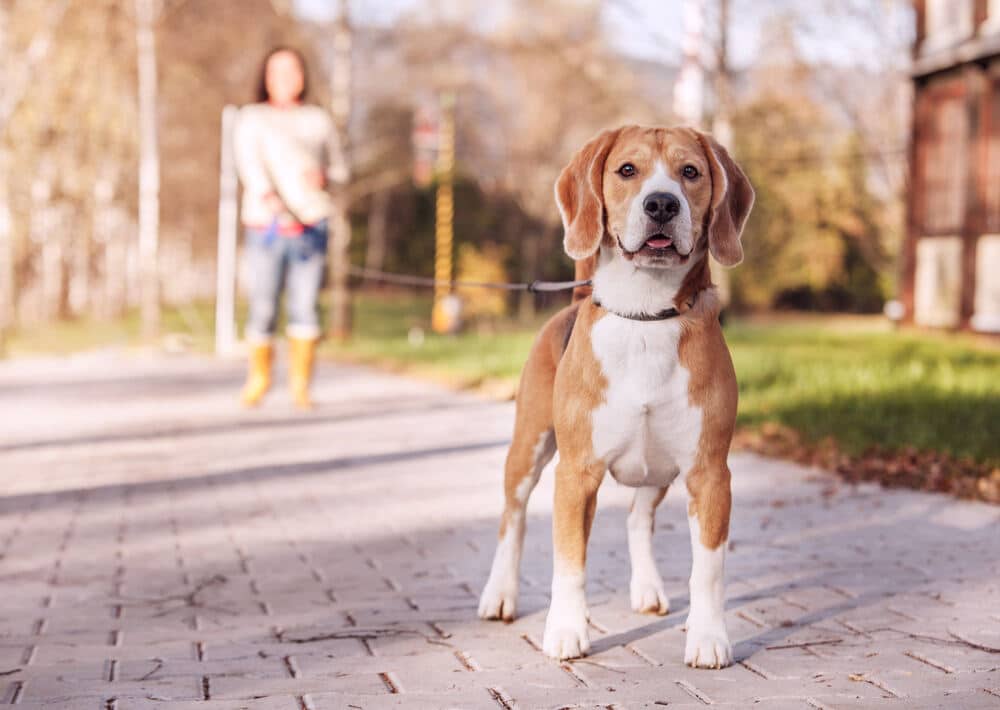Leash training for socialization: A dog’s socialization is an important component of education, along with care and concern for its health. A socialized pet means the owner’s comfort during walks and trips together and safety for people, other animals, and the dog itself.
Absolutely! Let’s break down the importance of leash training as a part of your dog’s socialization and provide practical tips to help them navigate the world safely and confidently.
Why Leash Training is Essential for Socialization
- Controlled Exposure: A leash allows you to introduce your dog to new people, places, animals, and situations at a pace they can handle, preventing them from being overwhelmed.
- Safety First: A leashed dog is less likely to run into traffic, approach an unfriendly dog, or get lost. This creates a secure environment for learning and building positive associations.
- Teaching Good Manners: Leash training goes hand in hand with teaching polite walking, not lunging at people or dogs. This makes your dog a welcome presence in public spaces.
- Communication Tool: The leash is a way to signal to your dog what you expect. Even in busy environments, gentle tugs or stops can guide their behavior and teach them to pay attention to you.
Where to Begin
- Puppyhood is Prime Time: Start leash and socialization basics early! Puppies are more adaptable and learn quickly.
- Familiarize at Home: Before taking them outside, let your puppy sniff and explore the leash and harness in a safe, familiar space.
- Planned Encounters: Consider where your dog is likely to go (parks, vet, pet-friendly stores) and gradually introduce them to similar sights and sounds.
Leash Training Tips for Successful Socialization
- Keep it Positive: Use treats, praise, and a happy voice to make walking on a leash a fun experience your dog looks forward to.
- Manage the Environment: Start in quiet areas, working up to busier ones as your dog gains confidence.
- Observe Your Dog’s Signals: If they seem tense, step back or offer a quiet place to rest. Pushing too hard can lead to fear and anxiety.
- Be a Shield: If strangers try to approach or touch your dog while they’re learning, politely redirect them. Your dog needs space to feel safe.
- Supervised Doggie Playdates: Let your dog interact with other friendly, vaccinated dogs in a controlled setting once they have basic leash manners.
7 Specific Methods for Mastering the Leash
- “Red Light, Green Light” Game: Stop walking when your puppy pulls, only moving forward when the leash is loose.
- Change Direction: Turn and walk the other way when your dog pulls. This teaches them that pulling accomplishes nothing.
- Treat Magnet: Hold a treat near your dog’s nose as you walk, rewarding them for walking beside you nicely.
- Short and Sweet Sessions: Especially for puppies, keep training sessions brief and positive.
- Find a Quiet Spot: Start in a distraction-free area to help your dog focus on walking with you.
- Seek Professional Help: Consult a qualified dog trainer for tailored guidance if your dog is fearful or reactive.
- Patience is Paramount: Every dog learns at their own pace. Don’t get discouraged; focus on celebrating progress!
Key Takeaway
Leash training isn’t just about controlling your dog’s movement; it’s about teaching them how to navigate the world calmly and confidently. This sets the foundation for a well-socialized, happy companion who brings joy to you and those around you.
What is Socialization?
Socialization is getting to know the outside world, adapting to typical living conditions, mastering the rules of behavior, and acquiring the skills necessary for normal existence among people and other animals. A socialized dog is:
- Calmly reacts to sounds, is not afraid of noise, be it the sound of a motorcycle or a squeal on the playground;
- Is indifferent or friendly towards other animals, has different options for interacting with them, depending on the situation and responses;
- Adequate next to the roadway (does not run out onto the road and is not afraid of a passing car);
- Has a peaceful attitude towards people passing by but does not force communication on them;
- It is highly likely to be controllable in emergencies.
Socialization means a dog’s comfort, security, and confidence when meeting new people, family members, and situations.
Why Is Leash Training For SOCIALISATION Needed?
As stated above, socialization is necessary, firstly, so that the owner feels comfortable spending time with his dog. After all, if a pet is trained to behave in various places, then it can be a companion for walks, trips to dog-friendly establishments, and trips together on vacation.
Secondly, a socialized dog is safe for itself and those around it. Such a pet will not run onto the roadway, be frightened by an unexpected sound, will not suddenly jump on passersby, wanting to communicate with them, will not get into a fight with other dogs, and thus will not create a dangerous situation for itself and others.
Even if it is assumed that the dog will live in a fenced area of a country house, where the presence of other animals is excluded, socialization is still necessary.
After all, the help of a veterinarian may be required, which means going outside the territory, interacting/touching strangers, and meeting other animals in the clinic.
In addition to the discomfort of poor physical health, the dog will be stressed by the new situation and may actively resist treatment.
It is naive to believe that the puppy will figure out how to behave with people on the street, with guests, with children, in transport, and with dogs.
An even more difficult task is to understand the difference between the owner’s guests and the courier, or what to expect from another dog walking on a leash with the owner instead of a stray pack running towards him.
Where to Start Socialization?
The smartest thing to do is to analyze the owner’s current and expected lifestyle and, on this basis, predict what situations the dog will find himself in.
For example, the owner has a summer house without a car, so his pet will need to behave calmly on a suburban electric train.
If the owner’s work involves business trips, and during this period, the dog will live with people who can be trusted, it must be calm about the change in its usual environment, the absence of the owner, and not spoil things in the house.
The more detailed all the expectations and situations in which the dog is expected to find itself are described, the more opportunities there will be to prepare the pet in advance for meeting new stimuli.
Leash Training For Socialization For Dogs:
If you don’t socialize a dog, it “socializes” itself. As a result, a rather noisy, constantly barking, unpredictable pet may grow up.
Sometimes, the dog is not purposefully trained, but at the same time, it is perfectly adapted to life among people and other animals in the city. Indeed, this happens, but natural learning ability and stable contact with a sensitive owner come into play here.
In any case, to become a worthy member of urban society, experience is required, and the owner’s task is to provide it in combination with training in the necessary behavior.
- You can start training as soon as your pet is 1.5-2 months old. Earlier lessons will not give results, and a stronger character will complicate education at a later age.
- The first lessons can be carried out when the baby stops showing increased interest in the new thing. He must also get used to the collar. Only after this can a leash be attached to it.
- The debut fitting lasts only a few minutes
- At this time, it is important to engage your pet in play. However, the dog should not play with the harness.
- Getting used to it won’t come right away
- It is important to gradually increase the amount of time your pet is in the harness.
How to teach your dog to walk on a leash?
It’s not enough to shout at him because there are a thousand and one ways to learn, but with the right method, it’s even better! So, here are seven methods to get there.
- Being well-equipped to learn to walk on a leash is a plus!
- A classic leash and collar are not enough to walk your dog without having the right method.
- It would help if you also had a sturdy safety harness that suits your pet’s build and size to prevent many strangulation injuries.
- It is not uncommon for owners to find themselves in delicate situations while walking with their dog on a leash.
- It is a completely natural behavior that the dog appreciates. Because he learned to do it the right way!
- For the entire duration of the walk until you get home safely.
Conclusion:
The puppy needs full socialization if the owners want to raise a dog with which it will be comfortable to go outside, travel, and meet other people.
The sooner you begin to accustom him to the conditions of the city, the smoother this process occurs.
However, socialization is complicated by the fact that until the puppy is fully vaccinated, it is not safe to go outside, so he spends the first 3.5-4 months at home.
But despite this limitation, the puppy can still be prepared for further interaction with people and dogs.


